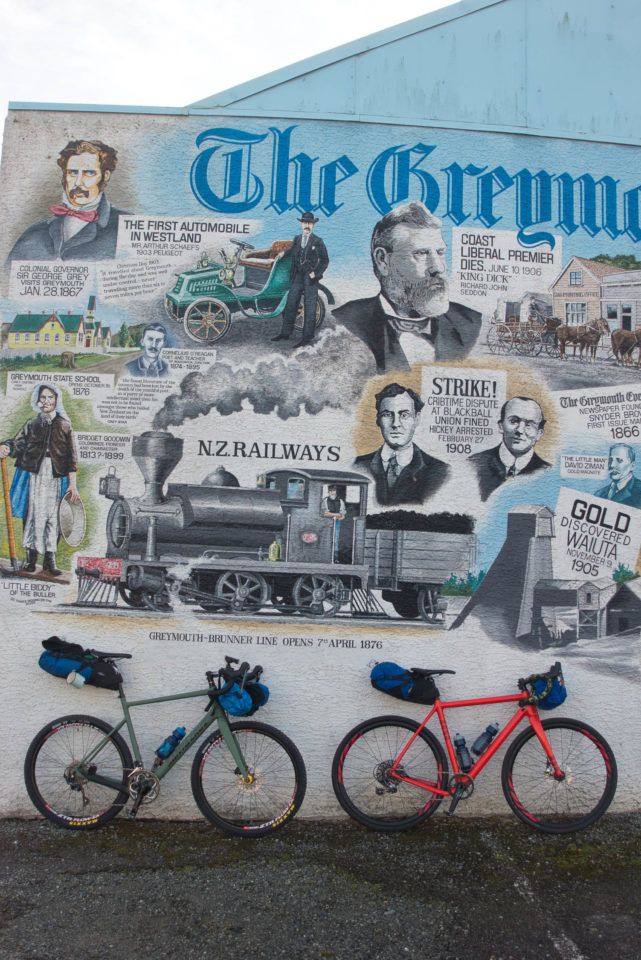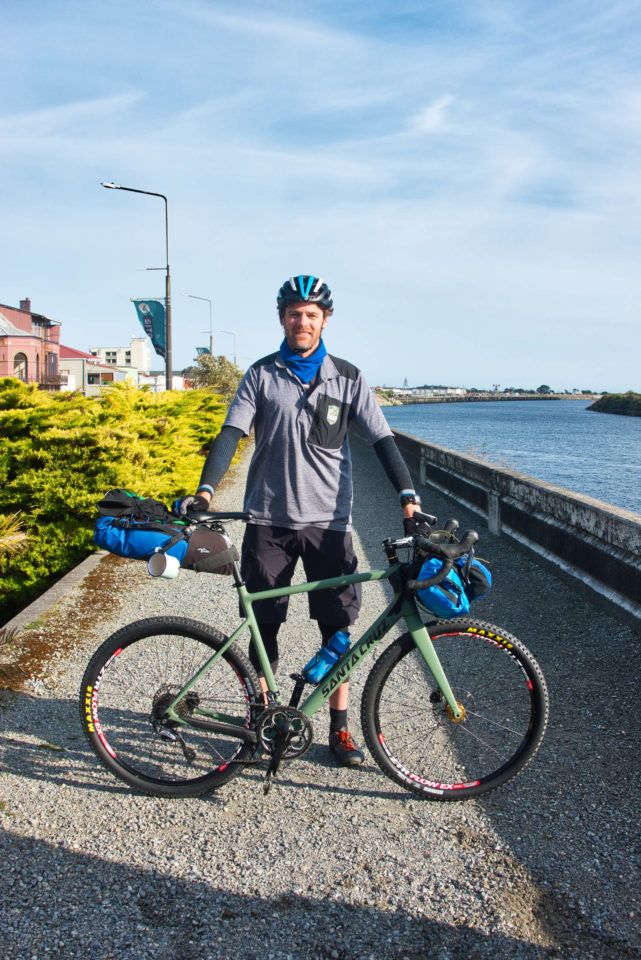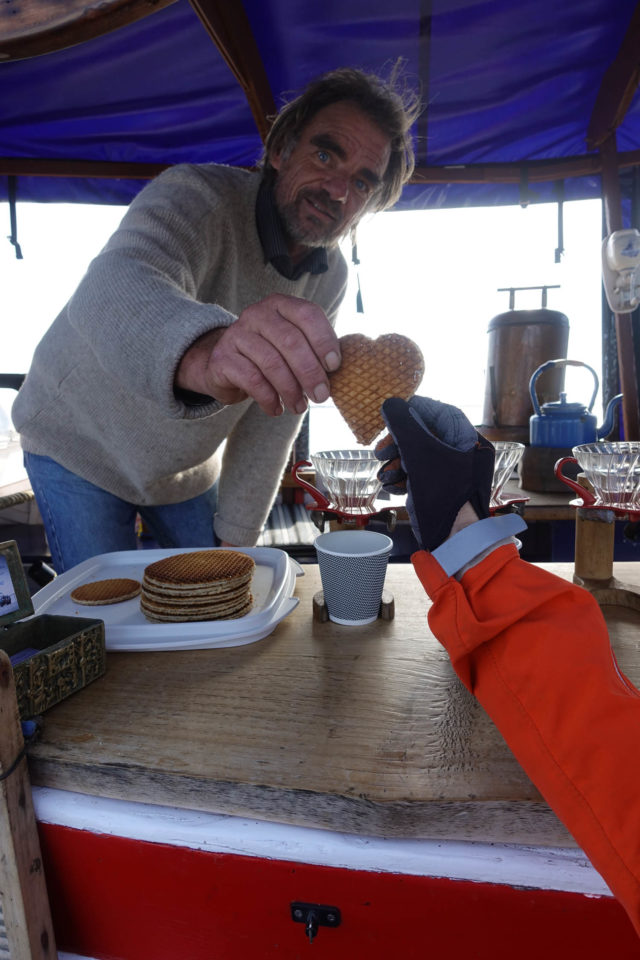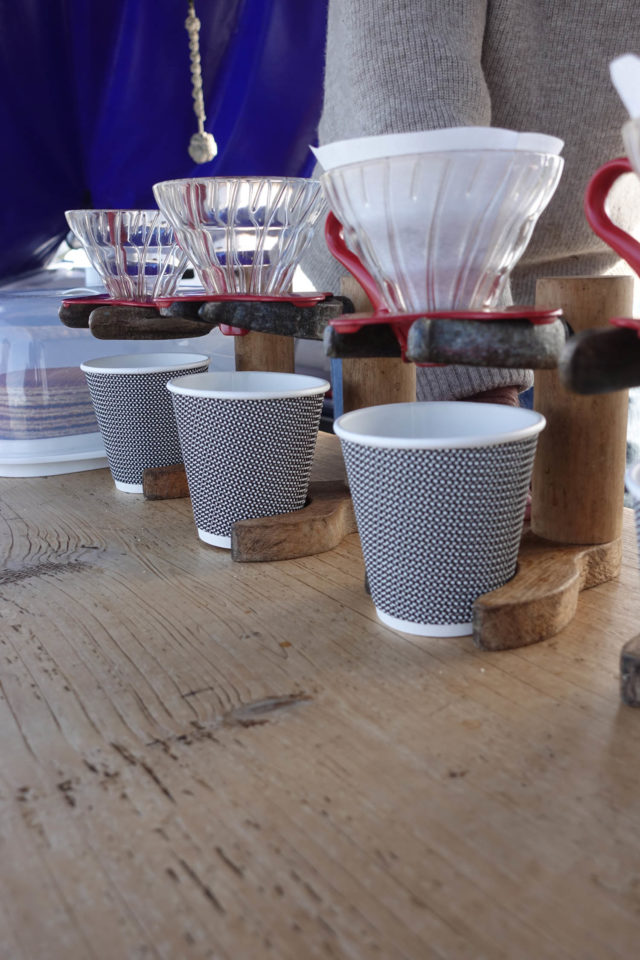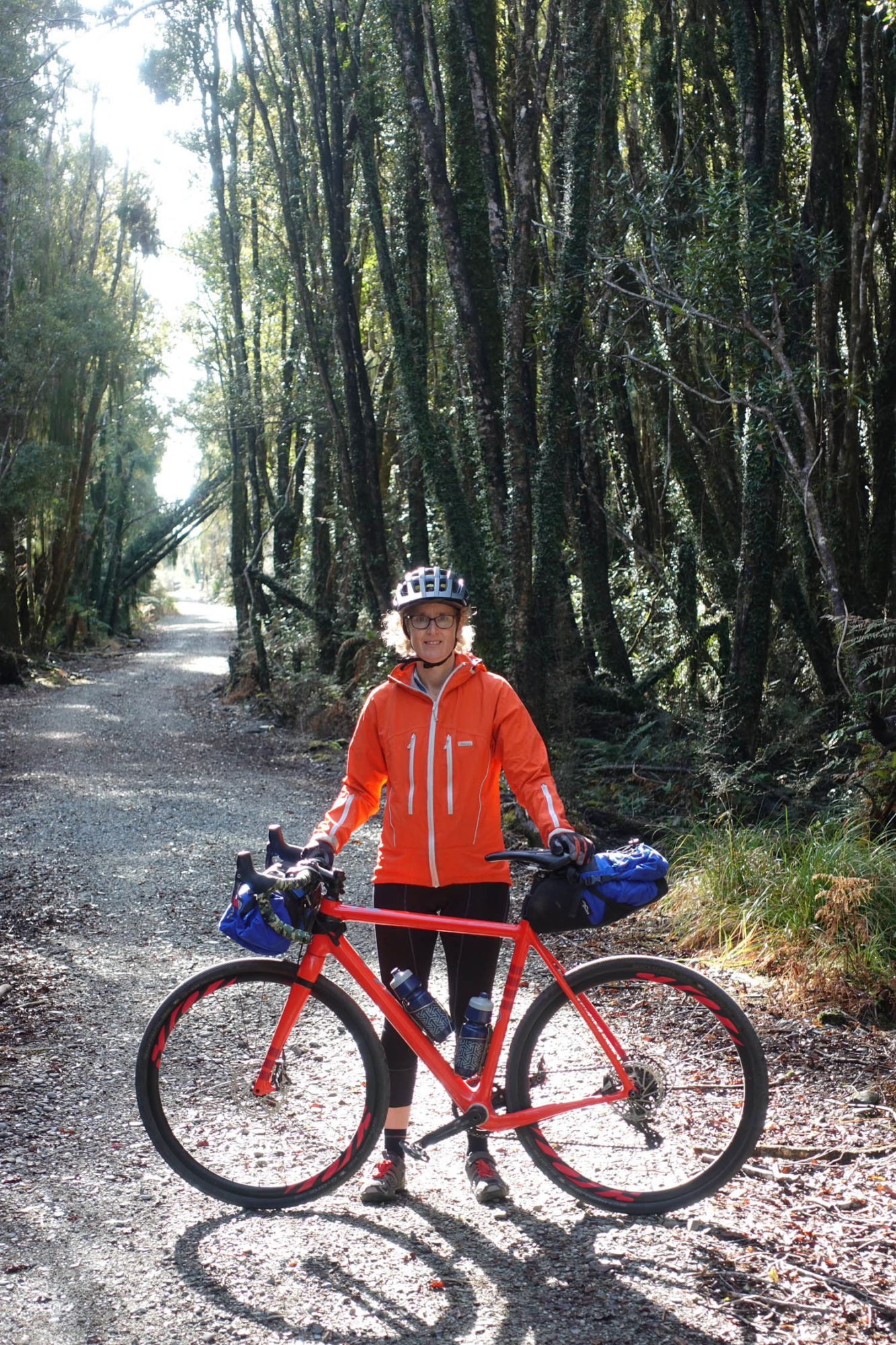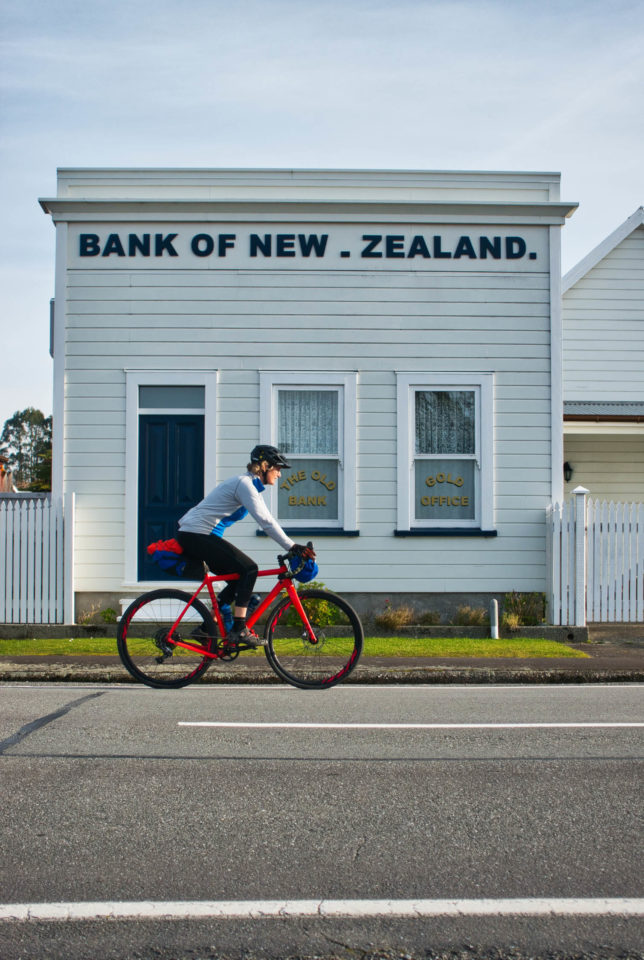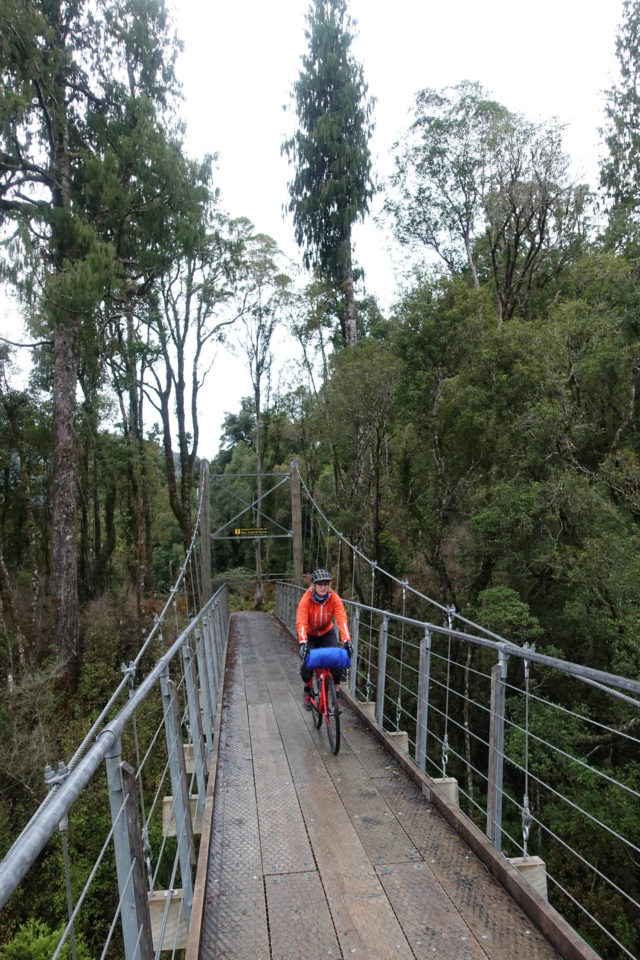West Coast Wilderness Trail
Share This
Damian and Catharine set off to explore New Zealand’s coast on a series of trails ending with the renowned West Coast Wilderness Trail. Along the way they made this short film. Watch it here, then read the full report from their trip…
Words and photos by Damian Stones
The West Coast of New Zealand’s South Island is rapidly becoming the country’s premier multi-day bikepacking destination. Youʼve got the Heaphy in the North, the Old Ghost Road (surely being one of the top 10 in the world), the nearly finished Paparoa Trail, and finally the West Coast Wilderness trail. Not too many other regions can compete with this many high class, multi-day trails. Watch the film below, then read our full trip report below…
As I wasnʼt an obvious fit for the target audience (think high-vis rail trail rider), I hadnʼt particularly prioritised this trail. Apart from thinking it would be cool to re-visit the Coast and go for a ride, I didnʼt have too many pre-conceived ideas about it. But I left with plenty of good things to say about this experience.
After my journey riding the Grand Loop (Old Ghost Road and Heaphy) on a gravel bike last year, I was keen to find some other gravel-bike-friendly journeys in the South Island. And I was equally keen to plan a trip that my wife would enjoy without a significant mission factor included. As bikes have changed and evolved, this type of trail has actually become quite appealing to me, however unlikely that is. With the recently released Santa Cruz Stigmata and its re-invention pointing firmly in the direction of gravel bike, this trail seemed like an obvious choice for its inaugural ride.
For me, the West Coast has a lot of appeal, particularly for its rugged coastline and mountainous backdrop. This landscape has a rich fabric of deep history and resilient communities. Intertwined into this landscape, we met people who were a true reflection of their environment.
Our journey started off in Greymouth. As with all adventures, the nights were long in the days prior getting everything organised (bikes, food, bikepacking equipment, etc.) and our number one priority was finding good, strong coffee. To get to the start of the trail we cycled through Greymouth township on our hunt for coffee and encountered the infamous barber. Well known to the locals, this cold, damp wind blows down the Grey Valley and brings bracing weather to the township. Jackets fully zipped, we started on the banks of the Grey River and rode towards the Greymouth Bar. The trail winds it way through the historic Greymouth Port past the moored fishing boats.
The West Coast has a long history of reliance on natural resources for its economy and the port has been essential for this. The fact that a cycleway now runs along this port is an indication of how this direction has changed and the impact of cycling tourism on the West Coast. We couldnʼt miss the views up and down the coast from the breakwaters of the notorious Greymouth Bar. The entrance way to the Grey River and port is one of the most challenging in the country, and fittingly we discovered a coffee cart/boat docked at the tip of the breakwater. Richard and Monique, originally from the Netherlands, are the owners of the ʻLifeboat NZʼ and offered typical West Coast hospitality, treating us to fresh stroopwafles and our sorely needed coffee.
This set the scene for leaving the bustle of town life behind and starting our journey south. We were stoked to start pedalling and enjoying the simplicity of riding gravel bikes on relaxed trails. Most of my riding is on mountain bike trails, which requires a certain intensity and focus. This experience provided a welcome contrast.
We followed the coastline from Greymouth to the Taramakau River, the only section of the trail that hugs the coast. As we chatted together, riding side by side, we were reminded of the rugged beauty of the West Coast while hearing the waves crashing on our right. As you arrive at the Taramakau River there are old and new bridges that symbolise the changes in this landscape. This significant river was importance to the Poutini Ngai Tahu people, who established a village at the mouth of the river and used this as a base for food gathering and greenstone seeking. For me, the Taramakau River also symbolised the gateway into the trail’s wilderness.
This trail takes advantage of historic tracks, roads, and tramways. One of the more distinctive features of the next section was the Greymouth Kumera Tramway, which was built to transport gold in the late 1800s. This avenue was originally created for horse-drawn trams and it suited our form of transport while also providing a stunning backdrop of native trees.
Our focus now was to get to Kumara for lunch, and the local park provided all we needed to heat up our freeze dried meals and make a quick coffee. The impact of the cycleway on Kumara has been significant, with many of the historic buildings renovated to provide accommodation, most notably the beautifully restored BNZ building. If you’re opting for a more leisurely pace on this trail, Kumera would be an obvious stopping point. However, we were pushing on.
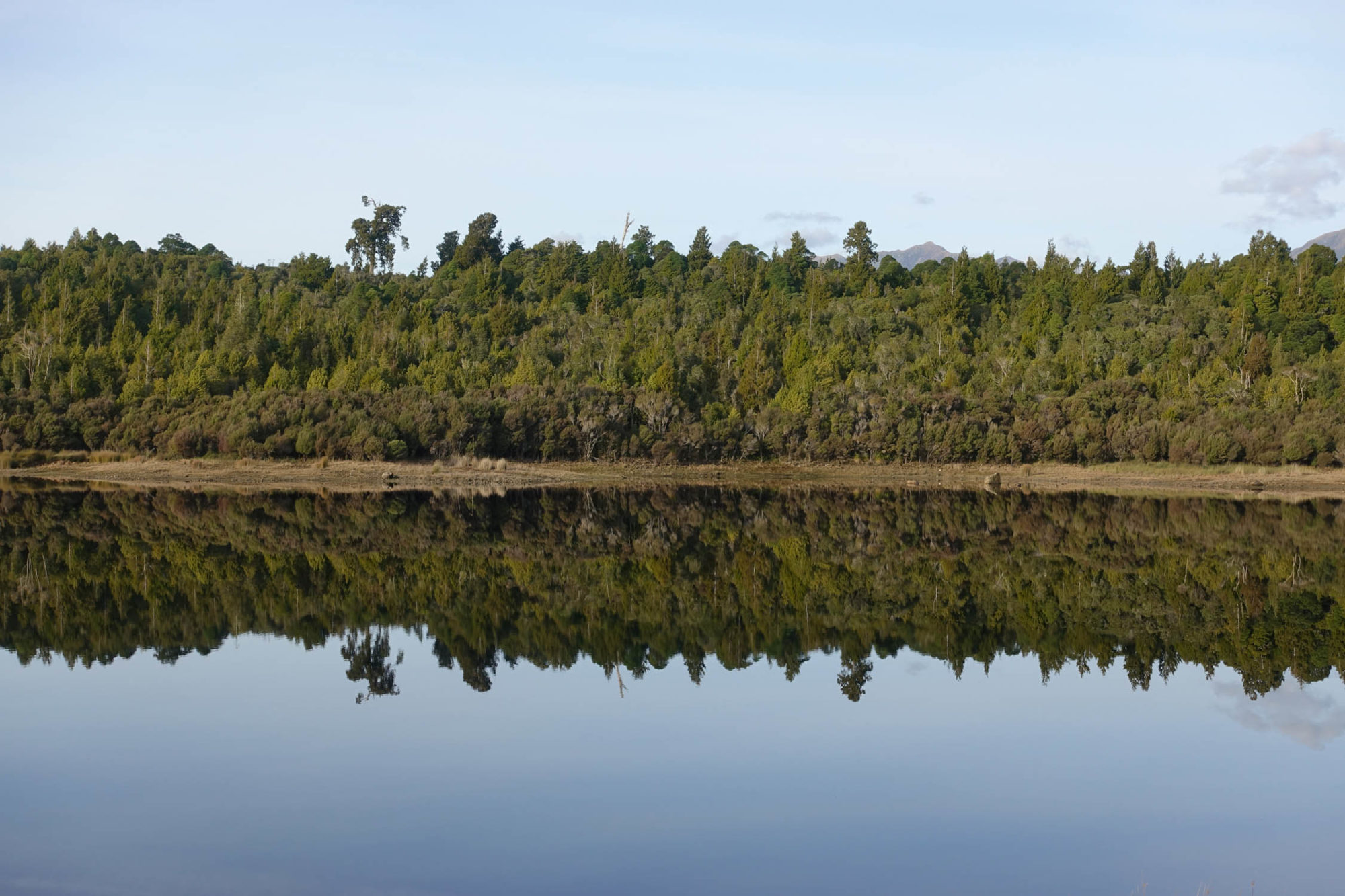
On leaving Kumera we headed further off the beaten track and a fun little section of single track took us to the stunning Kapitea and Kumera Reservoirs. These reservoirs were originally constructed to supply water for gold mining sluicing and later for power schemes, starting in the 1920s. In more recent times these reservoirs have been enlarged and further developed to continue to provide water for local power supply, providing stunning reflections of the West Coast forest and the Southern Alps.
The trail winds it way around and through the reservoirs before joining a gravel road that pushed us into the foothills. One of the distinctive features of this was riding next to the canal that diverts water to the Dillmans Power Scheme. The canal is home to the blue duck, and while we didnʼt spot any blue duck we were welcomed by the infamous mountain parrot and the kea on our way up to Kawhaka Pass. Time was not on our side as we started to climb and soon the air became cooler, daylight faded, and our enthusiasm for dinner and a warm bed grew.
We were happy to say the weirs – known for their problematic flooding – were running low and it was a smooth crossing before reaching the last section of singletrack before the end of the day. If rain had been in the forecast we would have thought long and hard before committing to this section. Clearly, some form of alternative means to get across these weirs is a significant priority for this trail.
Now just a few minutes from our accommodation, we entered the bush and followed a short section of fun singletrack winding its way down through rain forest to Macpherson Creek Bridge, an essential means to cross a massive chasm beneath us.
Riding down the Arahura Valley the next morning was nothing short of spectacular, even on a misty, cold day. The Arahua river and valley is of special significance to Poutini Ngai Tahu as it’s an important source of pounamu, or greenstone. We descended all the way to the valley floor, riding down numerous switchbacks through farmland bordering the mighty river. Itʼs not hard to imagine this river raging during a typical West Coast storm.
The weather set in after the singletrack and we donned our wet weather gear for a particularly gritty gravel road ride to reach the iconic Lake Kaniere in time for a second breakfast and a coffee. Formed from a glacier during the last ice age, this impressive lake is now a water supply for Hokitika. We set up the jet boil on a well positioned picnic table overlooking the lake, which looked stunning in the misty weather that surrounded us.
Fully refuelled after Lake Kaniere, we hit singletrack straight away and followed the historic Kaniere Water Race that was built in 1875 for the gold mining industry. It made for quite a distinctive section of trail. The next section of fast flowing singletrack winds its way through mixed podocarp and scrub country, which made for some fun trail riding on our gravel bikes.
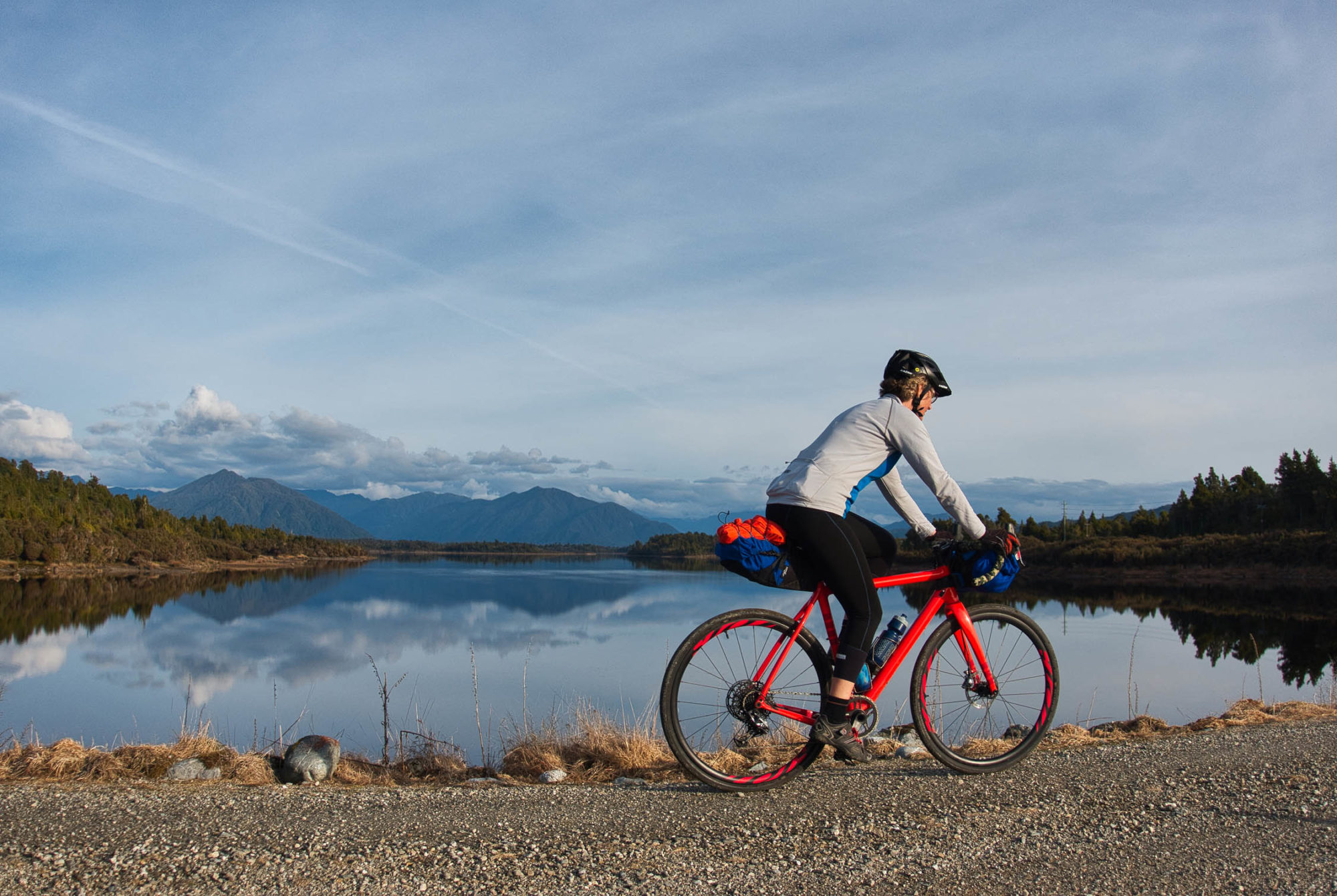
We were now pretty focused on a coffee in Hokitika and we followed the next section along roads through rolling hill country before finishing alongside the Hokitika River and the Kaniere Tramway. It was starting to rain pretty heavily and we quickly found the Kitchen Cafe, equipped with bike racks and an outdoor tap to fill drink bottles, for a coffee before heading out to the beach to check out the iconic driftwood Hokitika sign.
It the weather had been on our side we would have spent a little more time in Hokitika. It’s a town with a lot of character that caters to the growing tourist market while still retaining its historic and low-key flavour.
Fuelled by coffee, we synched up our jackets and headed out into classic West Coast rain, crossing the Hokitika River, one of the last impressive rivers to cross on our journey south.
A highlights for us, even in the decidedly damp conditions, was the Mahinapua Track, a longer section of singletrack that meanders through native bush and emerges onto a boardwalk through a wetland. We found there were enough singletrack sections like this throughout the trail to keep up our interest and keep the buzz on our gravel bikes.
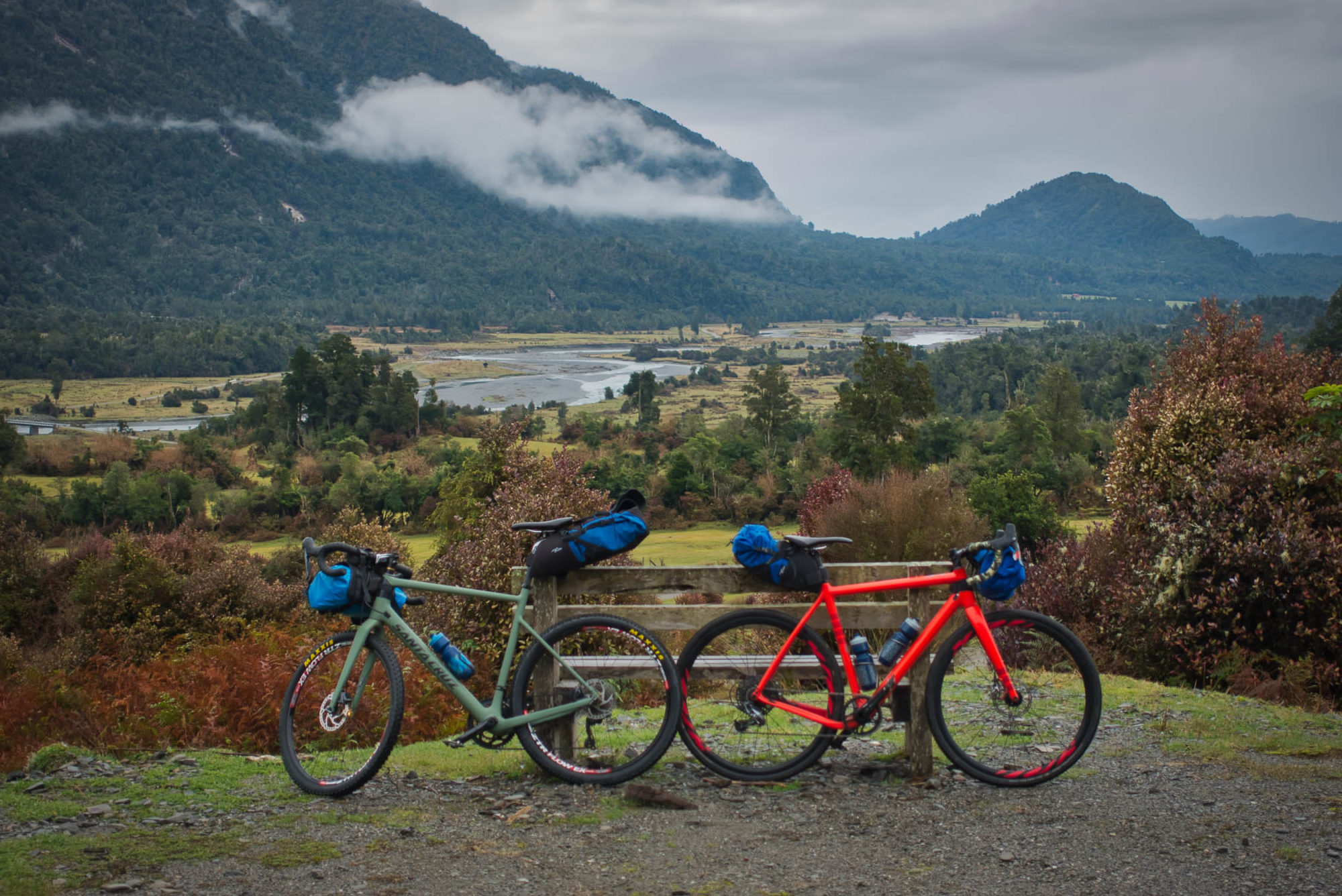
The last section of track is kind of classic and unique as it’s dead straight for a full 10kms! However, it is made more interesting by the knowledge that it follows the historic Hokitika to Ross Railway line, built in 1909. Becoming increasingly soggy, we had our heads down and were charging for Ross. Our focus slowly shifted to reaching the end and dry clothes!
We were greeted in Ross by Dave Ritchie from Wilderness Trail Shuttle, a welcome sight. Before we headed back up the coast Dave suggested we stop for a beer and chips at the historic Empire Hotel. We knew we were still on the West Coast when we entered the hotel to a roaring fire fed by massive pieces of driftwood and the hearty talk of local characters.
On the way back up the coast we stopped to have a look at the base for Cycle Journeys, Dave’s other company, in Hokitika. We were impressed by Daveʼs passion for the trail and for what it’s bringing to the West Coast community. Cycle Journeys is equipped with a substantial fleet of bikes, including the increasingly popular e-bikes. They are also gearing up for the opening of the Paparoa Trail in December.
En route to our vehicle in Greymouth, Dave explained the various ways that the trail can be ridden. One of the key logistic features of this trail is the fact that you can arrive by train from Christchurch or fly into Hokitika. In the summer season, Dave generally recommends people ride from Ross to Greymouth to take advantage of the prevailing winds.
The West Coast Wilderness Trail is a prime example of what a trail can bring to a community and we saw many examples of this during our journey. We shared stories on the short drive back to Greymouth and we decided that food was on the agenda before beginning our long drive home. The Speights Ale House was a welcome choice and a fantastic end to our West Coast experience. We hit the road filled with many good memories and stories of the trail, motivating us for the next gravel bike adventure.
Big Thanks to Wilderness trail shuttle, Cowboy Paradise, Santa Cruz bicycles, Shimano, Ibis NZ, and Hyperformance NZ.
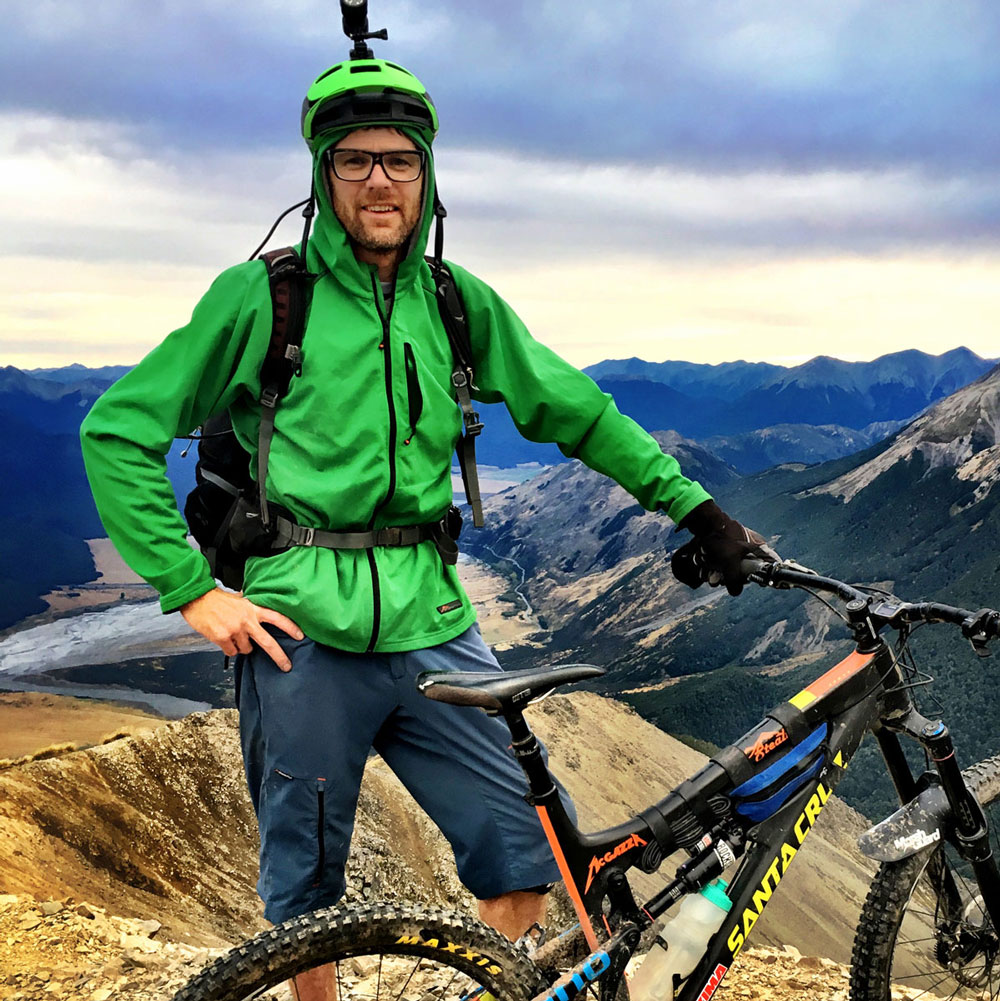
About Damian Stones
Damian Stones is a mountain bike adventurer and guide, a freelance bike skills coach, and pump track designer. Damian has been involved in mountain biking for 20 years and is brand ambassador for Santa Cruz Bicycles NZ, Shimano NZ, Lazer helmets, Clif Bar, Ground Effect clothing, Sea to Summit, Yakima Bike Racks, Absolute Wilderness and Jetboil NZ. He is also supported by his local bike shop, My Ride Richmond. Follow Damian on Instagram @damianstones and learn more on his website.
Please keep the conversation civil, constructive, and inclusive, or your comment will be removed.












